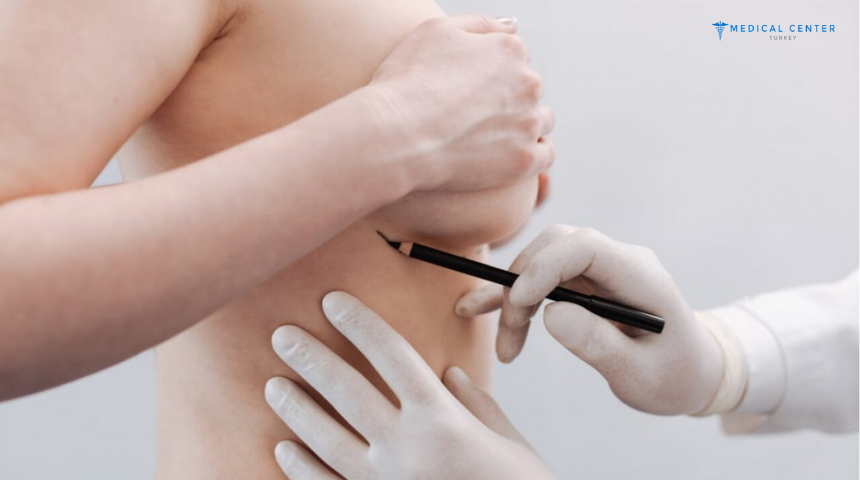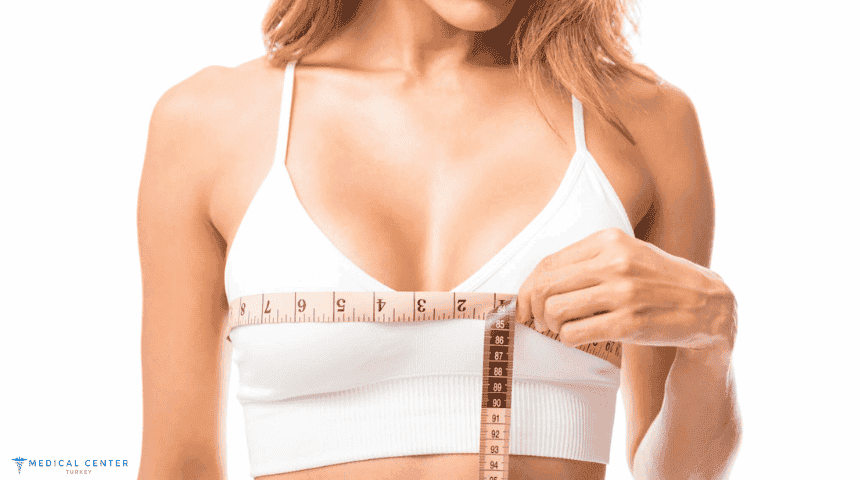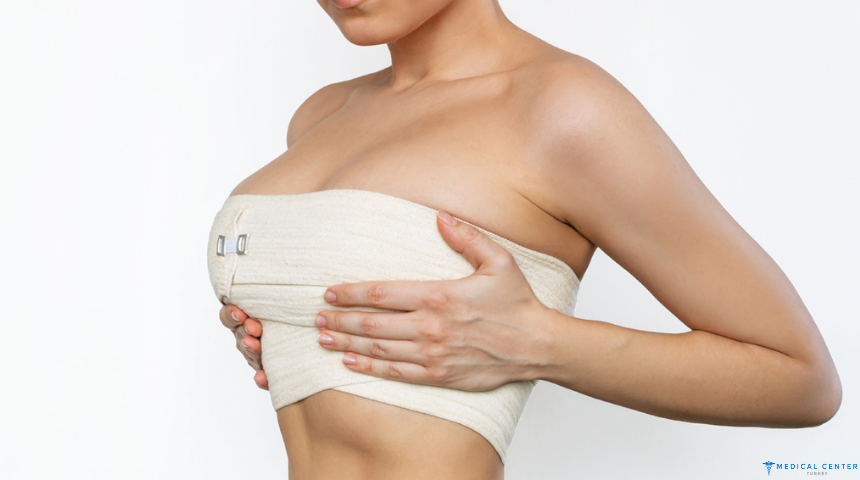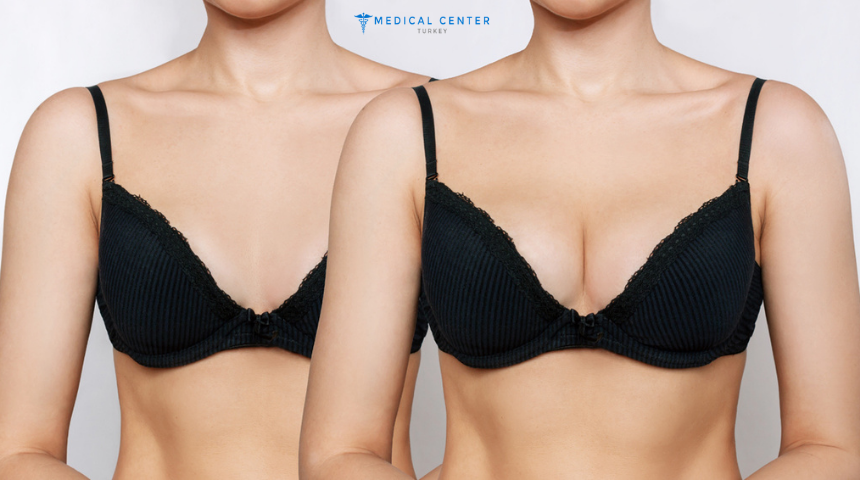How Much Does a Complete Breast Augmentation Package Cost in 2025?
How Much Does a Complete Breast Augmentation Package Cost in 2025? is an article that aims to give you all the information you do not know about How Much Does a Complete Breast Augmentation Package Cost in 2025 and more. We kindly shared the main headings with you;
What is Breast Agumentation Surgery?
Breast augmentation is a surgical procedure aimed at increasing the size or changing the shape of a person’s breasts. It typically involves the use of breast implants, which can be filled with either saline (sterile salt water) or silicone gel. Some individuals may also opt for fat grafting, where fat is taken from another area of the body and injected into the breasts.
The procedure is commonly done for cosmetic reasons, such as enhancing breast volume, restoring breast shape after weight loss or pregnancy, or improving breast symmetry. It can also be a part of breast reconstruction following a mastectomy (breast removal due to cancer).
The surgery is usually performed under general anesthesia, and recovery times vary, but most people can resume normal activities within a few weeks. Risks include infection, scarring, and complications like implant rupture or capsular contracture (hardening of tissue around the implant).
Who Needs Breast Agumentation?
Breast augmentation is a personal decision, and the reasons for pursuing it vary widely. People who may consider breast augmentation often fall into the following categories:
Cosmetic Reasons
Desire for Larger Breasts: Individuals who feel their breast size is too small or disproportionate to their body may opt for breast augmentation to achieve a fuller or more symmetrical appearance.
Enhancing Confidence or Self-Esteem: Some people may feel that larger breasts help improve their body image, leading to increased confidence and a sense of well-being.
Improving Proportions: People seeking to improve their overall body proportions, particularly those with narrow or small chests, might choose breast augmentation to create a more balanced silhouette.
Post-Pregnancy or Weight Loss
Restoring Volume After Pregnancy or Breastfeeding: After pregnancy or breastfeeding, some women notice a reduction in breast volume, which may cause sagging or asymmetry. Breast augmentation can restore the fullness and shape.
After Significant Weight Loss: Significant weight loss can lead to loss of breast volume, causing breasts to appear smaller or sag. Augmentation can help regain volume and shape after weight loss.
Asymmetry or Uneven Breasts
Many people have naturally uneven breasts. While this is usually not a problem, some might feel self-conscious about the size or shape differences and opt for breast augmentation to achieve a more balanced appearance.
Breast Reconstruction After Mastectomy
Breast Cancer Survivors: For individuals who have undergone a mastectomy (removal of one or both breasts) as part of breast cancer treatment, breast augmentation or reconstruction can help restore the natural appearance of the breasts and improve their quality of life.
Genetic Factors or Medical Conditions
Underdevelopment of Breasts (Hypomastia): Some individuals may have naturally underdeveloped or underformed breasts due to genetic factors or hormonal conditions, leading them to seek breast augmentation to improve their breast size and shape.
Congenital Asymmetry or Absence of Breasts (Amastia or Poland Syndrome): In rare cases, individuals may be born with one or both breasts underdeveloped or missing entirely. Breast augmentation can help in reconstructing the breast tissue.
Psychological and Emotional Reasons
Improving Body Image: For some, the desire for breast augmentation stems from dissatisfaction with their body image. This could be influenced by media portrayals of ideal beauty or personal experiences that have made them feel less confident.
Addressing Physical Discomfort: For some individuals, large breasts can cause physical discomfort such as back, neck, or shoulder pain. In some cases, breast reduction (a different type of surgery) may be considered, but breast augmentation could be sought if someone is looking to achieve a larger but balanced breast size in relation to their body.
How is Breast Agumentation Process Progressing?
The process of breast augmentation typically follows several key stages, each with its own specific steps. Here’s a general breakdown of how the process progresses:
Consultation with a Plastic Surgeon
- Initial Assessment: The process begins with a consultation with a board-certified plastic surgeon. During this visit, the surgeon will discuss your goals, medical history, and any concerns you may have.
- Examination and Measurements: The surgeon will assess your body, including your chest size, breast tissue, and overall proportions. This helps determine the most appropriate type and size of implants.
- Options and Recommendations: The surgeon will present different types of implants (saline or silicone) and discuss various shapes, sizes, and profiles to match your desired outcome. They will also explain the surgical approach (placement of the implant, incision options, etc.).
- Pre-Op Instructions: You will be given instructions on how to prepare for the surgery, including any lifestyle changes, medications to avoid, or preoperative testing.
Pre-Operative Preparation
- Medical Evaluation: Depending on your health history, the surgeon might require certain medical tests, such as blood tests or imaging, to ensure you’re healthy enough for surgery.
- Planning the Surgery: The surgeon will discuss the exact timing of the procedure, the anesthesia that will be used (usually general anesthesia), and the estimated recovery time.
- Arranging for Support: You’ll need to arrange for someone to drive you home after the surgery, as you will be under anesthesia.
Surgical Procedure (Breast Augmentation Surgery)
- Anesthesia: On the day of the surgery, you’ll be given general anesthesia to ensure you’re comfortable and asleep throughout the procedure.
- Incision: The surgeon makes an incision to insert the implants. There are typically three common locations for the incision:
- Inframammary (under the breast): This is the most common incision site, as it results in less visible scarring.
- Periareolar (around the areola): The incision is made around the darker skin of the areola.
- Transaxillary (in the armpit): This incision is made in the armpit area, leaving no visible scarring on the breast.
- Implant Placement: The surgeon creates a pocket either under the breast tissue or beneath the chest muscle, depending on the chosen method and your body type. The implant is then placed into this pocket.
- Closing the Incision: After the implants are in place, the incisions are closed with sutures, and bandages or a surgical bra are applied.
Post-Operative Care and Recovery
- Initial Recovery: You will spend some time in a recovery room post-surgery as the anesthesia wears off. You may feel groggy or sore for several hours, and you’ll need someone to drive you home.
- Recovery at Home:
- You’ll likely experience swelling, bruising, and mild discomfort for the first few days. Pain medication may be prescribed.
- It’s important to follow the surgeon’s post-op instructions, including keeping your breasts elevated, avoiding strenuous activities, and wearing a supportive bra to help with healing.
- Follow-up Appointments: You’ll return to your surgeon for follow-up visits to monitor the healing process, remove any stitches (if necessary), and ensure the implants are in place.
- Activity Restrictions: For several weeks, you’ll need to avoid lifting heavy objects and engaging in high-impact activities to avoid disturbing the healing process. The surgeon will advise when it’s safe to resume normal activities.
Long-Term Results
- Healing and Final Results: Swelling usually subsides within a few weeks, and the final shape of the breasts becomes clearer in about 3 to 6 months. The implants will settle into their final position as the surrounding tissue adjusts.
- Long-Term Care: Periodic follow-up visits with your surgeon are important to ensure the implants remain intact, and you’re satisfied with the results. Depending on the type of implant, they may need to be replaced or exchanged after several years.
- Possible Complications: While breast augmentation is generally safe, some individuals may experience complications, such as infection, changes in sensation, implant rupture, or capsular contracture. It’s crucial to monitor your breasts and contact your surgeon if any unusual symptoms occur.
Considerations for Future Adjustments
- Over time, you may choose to undergo revision surgery if you wish to change the size, shape, or type of implants. Some individuals also opt for a lift or other procedures to maintain the aesthetic appearance of their breasts as they age.


Is Turkey a Good Choice for Breast Agumentation Procedure?
Turkey has become one of the most popular destinations for medical tourism, particularly for cosmetic procedures like breast augmentation, due to several factors that make it an attractive choice for many people seeking surgery abroad. Here are some key points to consider if you’re thinking about getting breast augmentation in Turkey:
Affordability
- Cost-Effective: One of the main reasons people choose Turkey for breast augmentation is the lower cost compared to countries like the United States, the UK, or Western Europe. The price for surgery in Turkey can be as much as 40-70% cheaper, even though the quality of care remains high.
- Inclusive Packages: Many clinics offer all-inclusive packages that include surgery, anesthesia, hospital stay, post-op care, transportation, and sometimes even accommodations, making it easier for international patients to budget.
High-Quality Medical Care
- Experienced Surgeons: Turkey is home to many highly trained, board-certified plastic surgeons with experience in cosmetic procedures. Many of them have received training and certifications in the U.S., Europe, or other leading countries.
- State-of-the-Art Facilities: The medical facilities in Turkey, especially in major cities like Istanbul, Ankara, and Izmir, are modern, equipped with the latest technology, and often meet international healthcare standards. Many hospitals are accredited by international organizations such as JCI (Joint Commission International).
- English-Speaking Staff: Many clinics and hospitals in Turkey have staff who speak English, and they are accustomed to catering to international patients. This can make communication easier and the overall experience more comfortable.
Cosmetic Surgery Expertise
- Specialization in Aesthetic Procedures: Turkey is well-known for its expertise in cosmetic surgery, and breast augmentation is one of the most common procedures performed. Turkish surgeons are skilled in various implant types and techniques, and they often have experience with international patients who have different expectations.
- Reputation for Aesthetic Results: Turkey has earned a strong reputation for delivering high-quality aesthetic results, with many patients reporting satisfaction with their surgeries.
Tourism and Recovery
- Beautiful Destination: Combining surgery with a vacation is a big draw. Turkey has stunning tourist destinations such as Istanbul, Cappadocia, the Mediterranean coast, and more. If you are planning to recover in a beautiful setting, Turkey offers plenty of options for rest and relaxation after your procedure.
- Short Recovery Time: While recovery time after breast augmentation requires some rest, Turkey’s hospitality and beautiful locations may offer a peaceful environment for recovery, especially in private, quiet hotels or resorts.
Reputation and Reviews
- Positive Patient Reviews: Many international patients choose Turkey based on positive reviews and recommendations. Many people share their success stories on medical tourism forums, social media, and review websites, which can help reassure prospective patients.
- Patient Support: Most clinics in Turkey offer full assistance to international patients, including transportation from the airport, arranging accommodations, and guiding patients through the process in an efficient, well-organized manner.
Potential Risks
- Choosing a Qualified Clinic: Like any medical procedure, it’s crucial to do thorough research before choosing a surgeon or clinic. While Turkey has many reputable clinics, there are also some that may not meet the necessary standards. It’s essential to check the surgeon’s credentials, experience, and reviews before committing.
- Traveling for Surgery: Traveling abroad for surgery can sometimes complicate the recovery process, especially if you encounter complications after returning home. Some people may prefer staying closer to home for follow-up visits or to have a support system nearby.
- Post-Surgery Care: While many clinics provide aftercare instructions, the quality of post-op care can vary. It’s important to ensure that there is a clear plan for follow-up care, especially if you are traveling back home soon after the procedure.
Travel Considerations
- Visa and Travel Arrangements: Depending on your country of origin, you may need to apply for a visa to travel to Turkey. It’s important to check the travel requirements before making arrangements.
- Cultural Differences: While Turkey is a welcoming and modern destination, it’s helpful to be aware of cultural differences and customs. Understanding basic local norms and how medical tourism works can help smooth your experience.
How Much is Breast Agumentation Packages in Turkey 2025?
The cost of breast augmentation packages in Turkey in 2025 can vary depending on several factors, including the type of implants used, the clinic’s location and reputation, and the surgeon’s experience level. Most clinics offer all-inclusive packages that cover not only the surgery but also pre-operative consultations, post-operative care, medications, accommodation, and airport transfers, making them a popular and convenient choice for international patients.
To receive accurate and personalized details about our breast augmentation packages, we invite you to contact our team directly.
You can easily request a personalized treatment plan and receive your free quote by clicking the image below.
What to Expect After Breast Agumentation Procedure in Turkey?
After undergoing breast augmentation surgery in Turkey, there are several things you can expect during your recovery process:
Immediately After Surgery:
- Anesthesia Effects: You will wake up from anesthesia with a feeling of grogginess or drowsiness. It’s normal to feel some discomfort as the anesthesia wears off.
- Initial Pain and Swelling: You may experience some swelling, bruising, and soreness around the chest area, which can last for a few days to weeks. Pain is usually manageable with prescribed pain medications.
First Few Days:
- Resting and Healing: It’s important to rest during the first few days to allow your body to heal. You will need to avoid strenuous activities, especially lifting heavy objects.
- Drains and Bandages: Some patients may have small drains to help remove excess fluid and prevent infection. These will be removed within a few days. You will likely have bandages or a surgical bra to support the healing process.
- Follow-Up Appointment: You’ll be required to return to the clinic for a follow-up appointment to ensure proper healing and to have your stitches removed, if applicable.
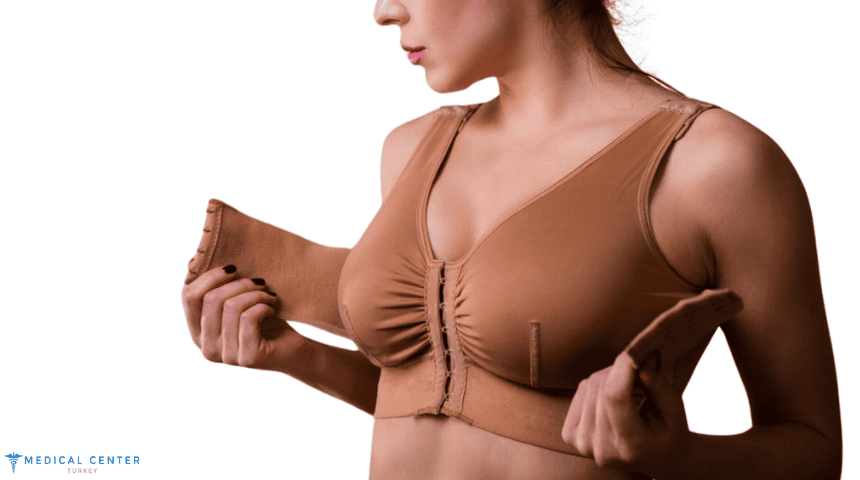

First Two Weeks:
- Swelling and Bruising: Swelling and bruising may persist, but it will gradually subside. The breast shape may not fully take form until the swelling goes down.
- Restricted Activities: You’ll need to avoid physical exertion, including exercise and lifting, for at least two weeks. You may also be advised to avoid sleeping on your stomach or side.
- Pain Relief: While some discomfort is normal, any pain should be manageable with over-the-counter medications or those prescribed by your surgeon.
Longer-Term Recovery (1-3 Months):
- Gradual Shape and Sensitivity: Your breasts will slowly settle into their final shape and size. Expect some fluctuation in their appearance during this time. You might also experience numbness or sensitivity around the nipple area, which is temporary.
- Resuming Normal Activities: After about 4-6 weeks, you can start to gradually resume light physical activity, and around 2-3 months, you can return to more intense exercise. Always follow your surgeon’s specific guidelines.
- Support Garment: You will need to wear a supportive bra for several weeks to help the implants settle in their correct position and to reduce swelling.
Potential Risks and Complications:
- Infection: Although rare, infection is a risk with any surgery. Following aftercare instructions and attending follow-up appointments can help reduce this risk.
- Capsular Contracture: This occurs when the scar tissue around the implant tightens, potentially affecting the appearance or feel of the breast.
- Implant Positioning: Sometimes the implants may shift slightly during the healing process, and further adjustments may be needed.
Long-Term Care:
- Regular Check-Ups: It’s important to attend annual check-ups with your surgeon to monitor the condition of your implants.
- Lifetime Care: Although breast implants are designed to last, they may need to be replaced in the future due to wear, rupture, or aesthetic preferences.
If you would like to receive more detailed information or have any questions, feel free to contact us anytime. Simply click the link below.
